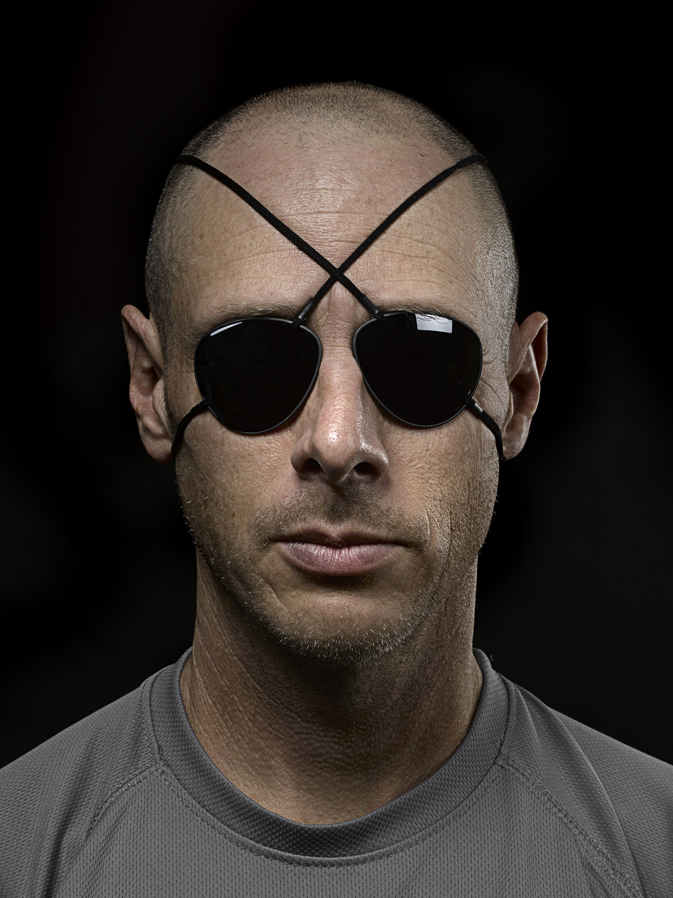דב גנשרוא | דיין-דיין
מבנה המונוקל הוא פתרון עיצובי עבור עין אחת. במקרה הרווח, בו לשתי העיניים דרושות עדשות מתקנות ראייה, אנו משתמשים בתצורה של משקפיים. דיין–דיין הוא פתרון עיצובי לעין אחת בשימוש כפול, תוך התעלמות מהמעבר ההיסטורי למשקפיים. מוצר איקוני זה הולם גיבור–על, ובהקשר הישראלי–המקומי הוא מאזכר את המדינאי המוכר משה דיין.
מבנה המונוקל הוא פתרון עיצובי עבור עין אחת. במקרה הרווח, בו לשתי העיניים דרושות עדשות מתקנות ראייה, אנו משתמשים בתצורה של משקפיים. דיין–דיין הוא פתרון עיצובי לעין אחת בשימוש כפול, תוך התעלמות מהמעבר ההיסטורי למשקפיים. מוצר איקוני זה הולם גיבור–על, ובהקשר הישראלי–המקומי הוא מאזכר את המדינאי המוכר משה דיין.

Dov Ganchrow | Dayandayan
The starting point for the Dayandayan project was one of looking at the glasses’ structural configuration. The mechanical need to hold two glass lenses adjacent to the eyes on the sculpted contours of the human face, gave birth to at least one iconic structure easily identified in any graphic representation: two circular rings trapping the lenses and connected by a short “bridge” that rests on the nose as well as elongated “arms” reaching from the exterior of the lens enclosures all the way to the back of the ears.
In what way can a second look at the reasoning behind this universal solution lead to alternative structures?
If “Problem A: fixing a vision-correcting lens (monocle) to a face” can be solved in a certain way then “Problem B: fixing vision-correcting lenses for both eyes to a face” can actually be viewed as solving “problem A” twice.
This thought was paired with what is probably the most culturally and historically significant local ‘monocle’ icon – for an eye so damaged it could not see at all and hence this monocle was in fact an eye-patch. This eye-patch belonged to, and was inseparable from the war hero persona of Moshe Dayan.
The eye-patch, like the glasses, interplays strongly between the wearer’s image and the public acknowledgment of a physical handclap. At a time when Warner Brothers and DC have re-emerged with a slew of Hollywood blockbuster films, perhaps the Dayandayan could manifest fused with the identity of one of tomorrow’s new superheroes.
In what way can a second look at the reasoning behind this universal solution lead to alternative structures?
If “Problem A: fixing a vision-correcting lens (monocle) to a face” can be solved in a certain way then “Problem B: fixing vision-correcting lenses for both eyes to a face” can actually be viewed as solving “problem A” twice.
This thought was paired with what is probably the most culturally and historically significant local ‘monocle’ icon – for an eye so damaged it could not see at all and hence this monocle was in fact an eye-patch. This eye-patch belonged to, and was inseparable from the war hero persona of Moshe Dayan.
The eye-patch, like the glasses, interplays strongly between the wearer’s image and the public acknowledgment of a physical handclap. At a time when Warner Brothers and DC have re-emerged with a slew of Hollywood blockbuster films, perhaps the Dayandayan could manifest fused with the identity of one of tomorrow’s new superheroes.


